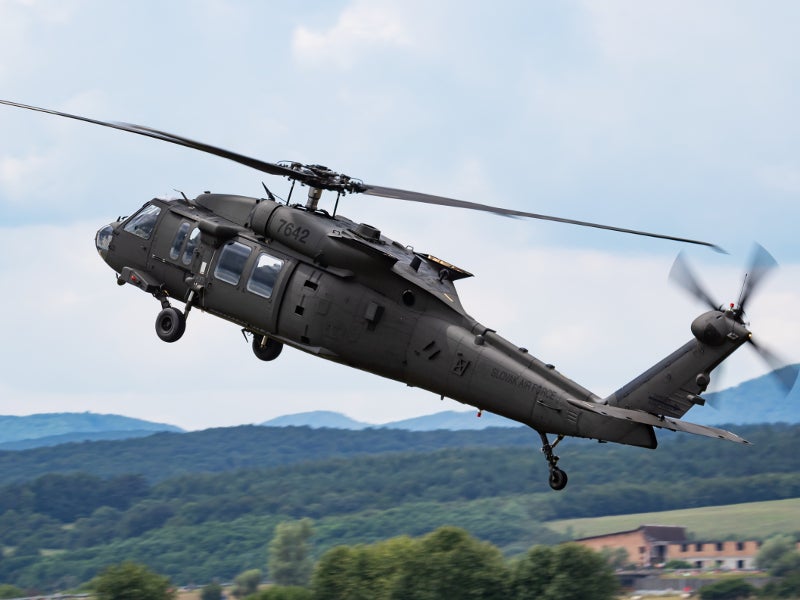Flying High: UH 60 Helicopter Security Protocols You Need To Know
Flying High: UH 60 Helicopter Security Protocols You Need To Know
Blog Article
Comprehending the Mechanics and Engineering Behind Uh 60 Helicopters
The UH-60 helicopter, commonly recognized as the Black Hawk, stands as a pinnacle of contemporary rotorcraft technology, embodying a blend of robust design and intricate mechanics. As we peel back the layers of the UH-60's design, a world of intricate systems and precise engineering comes to light.
History of UH-60 Helicopters
The history of UH-60 helicopters traces back to the late 1970s when the USA Army looked for a advanced and versatile energy helicopter to replace its aging fleet. In response to this need, the Sikorsky Aircraft Firm developed the UH-60 Black Hawk helicopter. Presented in 1979, the UH-60 quickly became a staple in army operations due to its outstanding capabilities.
The UH-60 was developed to stand out in a selection of goals, consisting of army transport, medical discharge, electronic war, and special operations. Its ability to adjust to various functions made it a beneficial asset to the united state Army and other military pressures around the globe
Over the years, the UH-60 system has undertaken several upgrades and variations to enhance its performance and equal evolving objective needs. These helicopters have seen extensive service in disputes such as the Gulf War, Afghanistan, and Iraq, showcasing their dependability and adaptability in diverse operational atmospheres. The UH-60's rich history is a testament to its enduring heritage as a top utility helicopter.

Engine and Power Solutions
Using sophisticated propulsion modern technology, UH-60 helicopters are outfitted with innovative engine and power systems to make certain optimal efficiency and integrity in a variety of functional scenarios. The UH-60, frequently called the Black Hawk, is powered by 2 General Electric T700-GE-701D engines, each with the ability of providing up to 1,940 shaft horse power. These turboshaft engines give the needed drive for the helicopter to execute its goals efficiently, consisting of troop transport, clinical discharge, and battle support.

Blades System and Aerodynamics
Just how do the rotor system and aerodynamics of UH-60 helicopters contribute to their functional effectiveness and trip abilities? The rotor system of the UH-60 helicopter plays a vital function in offering lift and propulsion.
The rules of aerodynamics additionally play an essential function in the efficiency of UH-60 helicopters. The streamlined fuselage and blades blade layout minimize drag, allowing the helicopter to attain greater speeds and better gas effectiveness. The wind resistant style of the UH-60 also adds to its capability to run in diverse ecological problems, consisting of high altitudes and hot temperatures.
Avionics and Trip Control Systems

In its elaborate coordination with the rotor system and the rules of aerodynamics of UH-60 helicopters, the avionics and flight control systems develop a vital network of technologies shaping the aircraft's functional capacities. In the UH-60, these systems consist of electronic displays, communication radios, General practitioner navigating, weather condition radar, and autopilot systems.
The flight control systems of the UH-60 are liable for converting the pilot's inputs right into the proper adjustments to the rotor system, ensuring secure trip and ability to move. These systems include hydraulic actuators, servos, and computer systems that interact to regulate the primary and tail rotors, in addition to other trip control surface areas. By exactly managing the helicopter's flight characteristics, these systems allow pilots to carry out a vast array of missions, from transport and search-and-rescue to combat operations, with accuracy and self-confidence.
Function and Applications in Air Travel
The role and applications of avionics and flight control systems in air travel are integral to making sure the safe check here and efficient operation of airplane, consisting of UH-60 helicopters. Avionics systems in UH-60 helicopters incorporate a variety of digital systems that help in navigation, communication, tracking, and regulating different airplane features. These systems consist of digital displays, auto-pilot systems, communication radios, general practitioner navigation equipment, and weather radar. Trip control systems play a crucial role in steering the helicopter in the air, keeping security, and making certain specific activities. The fly-by-wire innovation utilized in modern UH-60 helicopters translates pilot inputs into electronic signals, which are after that analyzed by the flight control computers to readjust the aircraft's control surface areas. Additionally, these systems include security attributes such as auto-pilot settings, surface recognition warning systems, and stability enhancement systems to improve the general security and operational capacities of the UH-60 helicopters in numerous click missions, consisting of troop transportation, clinical evacuation, search and rescue, and airborne firefighting.
Verdict
In final thought, the UH-60 helicopter is a functional aircraft with a rich history and progressed design. Its engine and power systems, rotor system, the rules of aerodynamics, avionics, and trip control systems all work together to make it a effective and reputable machine. The UH-60's role and applications in aviation are substantial, ranging from military operations to browse and save goals. Its proceeded growth and use demonstrate its value in the field of air travel (uh 60).
In its detailed control with the blades system and aerodynamics of UH-60 helicopters, the avionics and flight control systems form an important network of modern technologies forming the aircraft's operational abilities.The trip control systems of the UH-60 are liable for translating the pilot's inputs right into the suitable modifications to the rotor system, making certain secure trip and maneuverability. Avionics systems in UH-60 helicopters encompass an array of digital systems that aid in navigation, communication, monitoring, and controlling various aircraft functions. In addition, these systems incorporate safety and security attributes such as autopilot settings, terrain recognition advising systems, and security augmentation systems to improve the overall safety and security and operational capacities of the UH-60 helicopters in different objectives, including army transport, medical emptying, search and rescue, and airborne firefighting.
Its engine check it out and power systems, rotor system, aerodynamics, avionics, and flight control systems all work with each other to make it a reputable and efficient equipment.
Report this page